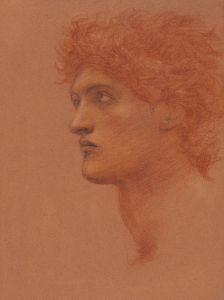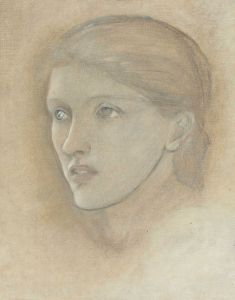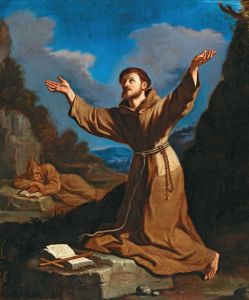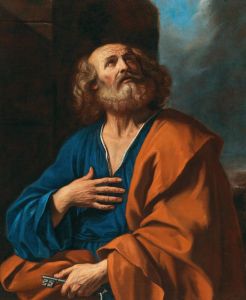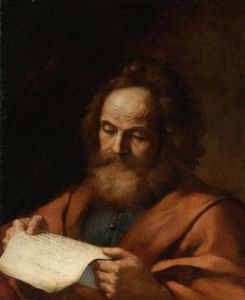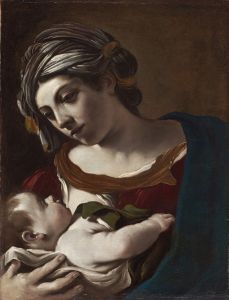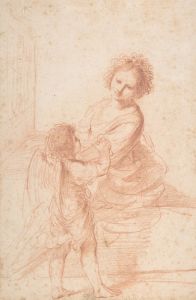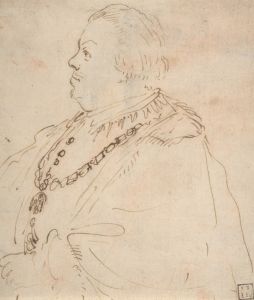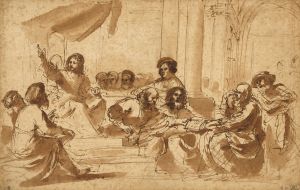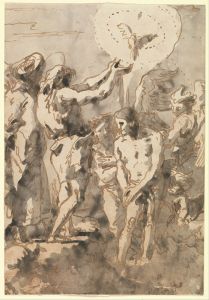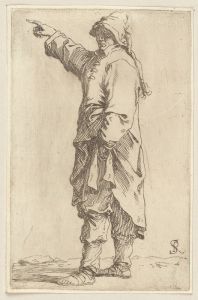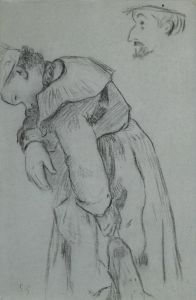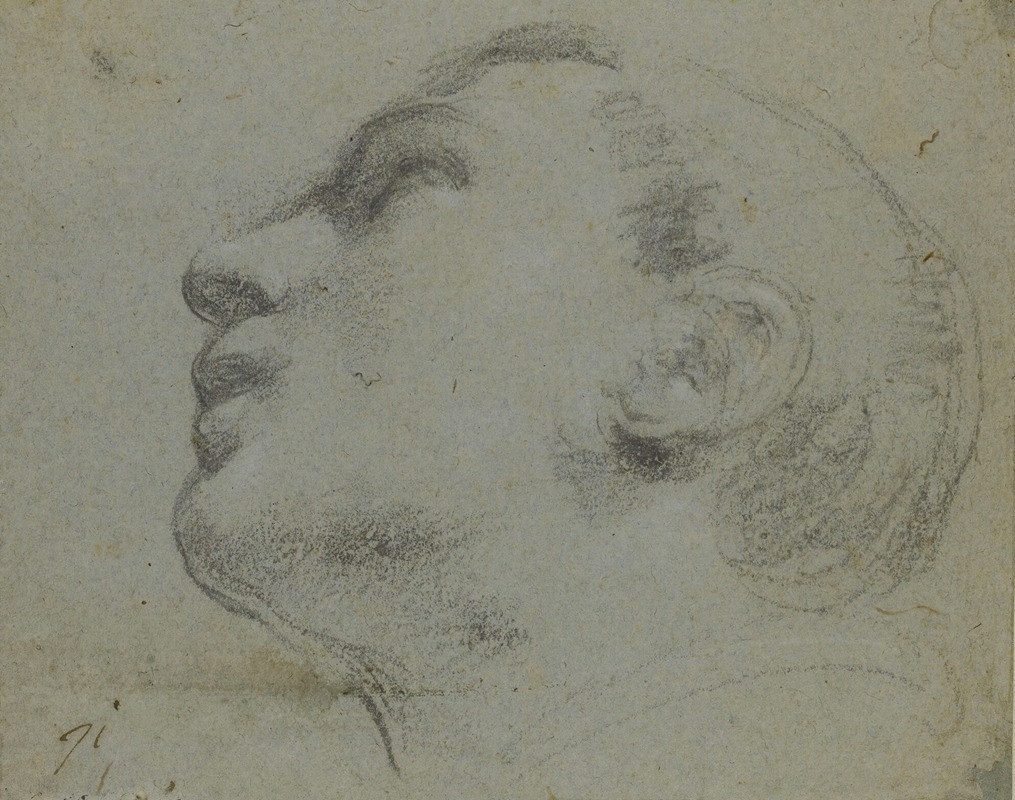
The head of a man turned to the left
A hand-painted replica of Guercino’s masterpiece The head of a man turned to the left, meticulously crafted by professional artists to capture the true essence of the original. Each piece is created with museum-quality canvas and rare mineral pigments, carefully painted by experienced artists with delicate brushstrokes and rich, layered colors to perfectly recreate the texture of the original artwork. Unlike machine-printed reproductions, this hand-painted version brings the painting to life, infused with the artist’s emotions and skill in every stroke. Whether for personal collection or home decoration, it instantly elevates the artistic atmosphere of any space.
"The Head of a Man Turned to the Left" is a drawing by the Italian Baroque artist Giovanni Francesco Barbieri, better known as Guercino. Born in 1591 in Cento, a small town in the Emilia-Romagna region of Italy, Guercino was a prominent figure in the Baroque movement, known for his dynamic compositions and expressive use of light and shadow.
This particular drawing is a fine example of Guercino's skill in capturing human emotion and character through portraiture. The work depicts the head of a man turned to the left, showcasing Guercino's adeptness in rendering the human form with a sense of realism and vitality. The drawing is executed with a keen attention to detail, particularly in the facial features and the texture of the hair, which are rendered with a delicate yet confident hand.
Guercino's use of chiaroscuro, a technique that plays with the contrast between light and dark, is evident in this drawing. This method not only adds depth and volume to the figure but also imbues the portrait with a dramatic intensity that is characteristic of Baroque art. The subtle gradations of tone highlight the contours of the man's face, suggesting a three-dimensional presence on the two-dimensional surface of the paper.
The drawing is believed to have been created during the early to mid-17th century, a period when Guercino was actively producing a wide range of works, from religious commissions to portraits and genre scenes. His ability to convey emotion and character through his art made him a sought-after artist, and he received numerous commissions from patrons across Italy and beyond.
Guercino's training began in his hometown of Cento, but he soon moved to Bologna, where he was influenced by the works of Ludovico Carracci and other Bolognese painters. His style evolved over time, incorporating elements of both the naturalism of the Carracci and the dramatic intensity of Caravaggio. This synthesis of influences is evident in "The Head of a Man Turned to the Left," where the realistic depiction of the subject is combined with a powerful use of light and shadow.
The drawing is part of a larger body of work by Guercino that includes paintings, frescoes, and other drawings. His oeuvre is celebrated for its emotional depth and technical mastery, and his works are held in high regard by art historians and collectors alike. Today, Guercino's drawings, including "The Head of a Man Turned to the Left," are housed in various museums and private collections around the world, where they continue to be studied and admired for their artistic merit.
In summary, "The Head of a Man Turned to the Left" exemplifies Guercino's talent as a draftsman and his ability to convey the subtleties of human expression. Through his expert use of chiaroscuro and his keen eye for detail, Guercino has created a work that resonates with the viewer, capturing a moment of introspection and humanity that transcends the centuries.





